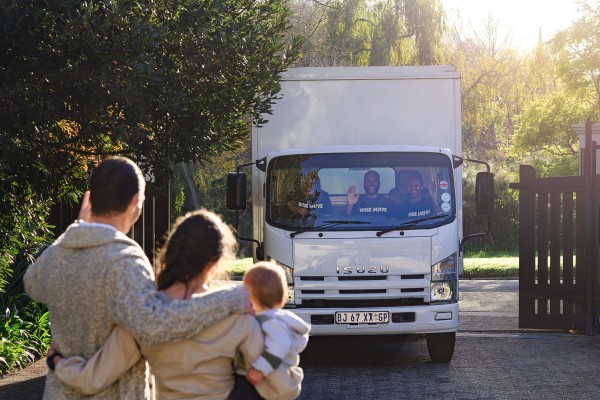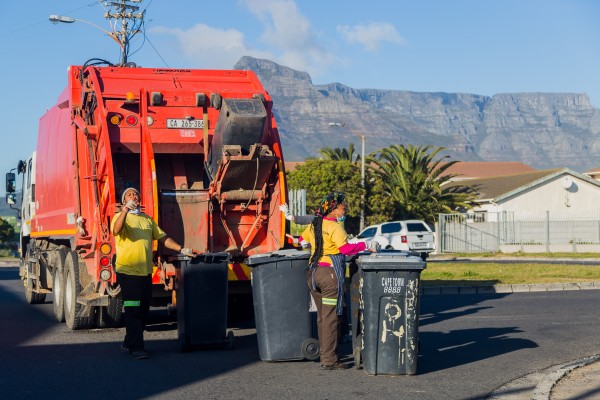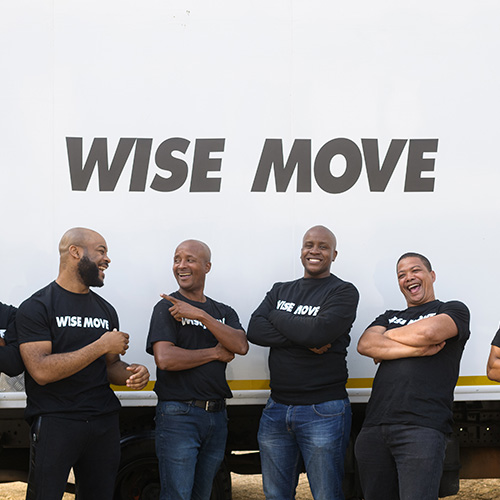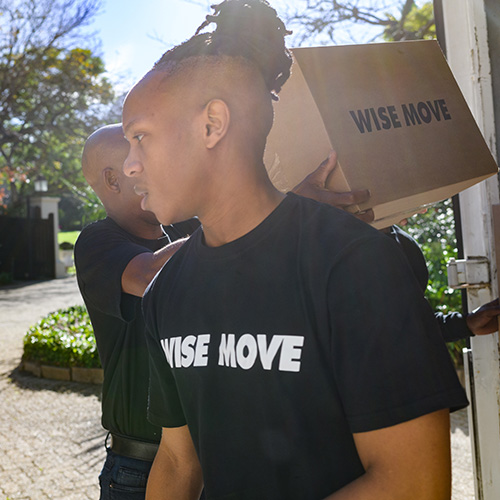
According to Clutch, 67% of employees face challenges while moving offices with 30% claiming their biggest challenge was distractions due to the move. One of the best ways to minimise downtime and ensure a smooth transition during an office move is to have a plan that breaks down the complicated process into small, manageable steps.
We've created the ultimate checklist complete with a detailed timeline, ensuring you're fully prepared from 6 months before your move through to your post-move activities. Let's begin!
6 Months Before Office Moving Day
Confirm your new office space.
Before you start preparing to move, you first have to confirm where you’re actually moving to. Once you’ve found the perfect new office space and signed the lease, you can then confirm important details that will determine your moving plan, such as the location, the office size and when you’ll be allowed to move in.
Assign the project to an office moving team.
Planning and executing an office relocation is a herculean task and a load far too much for one person, whether you’re a small business or a large corporation. To ensure a smooth and successful move, it’s best to designate the task to a small team who are best equipped to deal with this kind of task. You can even consult a relocation specialist to guide you.
Create your office move timeline.
Now that you know the basic details and the team that’s going to be spearheading the project, you can pick your official moving day. Knowing the time period you have to prepare, you can then take your moving day and work backwards, using this checklist to guide you, filling in the projected dates for each individual task.
But remember — plans change, so be prepared to adjust the timeline as you go along.
Communicate with your employees.
It’s time to let your employees know of the exciting new adventure on the horizon. The earlier you inform them, the more time they have to prepare. It also gives you some breathing room to adjust the plan if it clashes with some of your employees.
Assess your moving budget.
You can’t start preparing for your big office move if you don’t yet know how much money you have to work with. Sit down with your finance department and draw up a realistic moving budget. Finalising this early on allows you to have time to save and find funds if it’s going to be a tight squeeze.
3 Months Before Office Moving Day
Find trusted office movers.

While finding an affordable, trusted moving service can be hard and tedious, it doesn’t have to be. Using Wise Move’s moving company platform, you can quickly and effortlessly secure a top-rated office relocation service that’s best for both your business and your budget.
Notify your clients and suppliers.
The last thing you want is for your clients or suppliers to rock up to your office and realise that you’re no longer there. Send out a notice to everyone who comes to your offices that you’ll be moving, giving them your new address. Make sure to remind them closer to the time so that they don’t forget.
Have a walk through the new space.
It’s time to start visualising — a walk-through of your new office space will help see if everything in your old office space will fit into your new one and how it might all come together. It also gives you a chance to decide if you’re going to do any renovations or if the building needs any repairs with plenty of time to get it all done before moving day.
Figure out what’s staying and what’s going.
With a general idea of the new space in mind, you can now go through your office and take note of everything you’re keeping and everything you’d rather let go. Holding onto some special, beloved items can help create a familiar environment and aid in post-move productivity. But getting rid of items that are old, worn out, broken or unused not only saves you time but also saves you money with a lighter load and smaller volume.
While you go through everything, don't forget to make an inventory of everything that’s moving across.
1 Month Before Office Moving Day
Secure your moving insurance.
Once you’ve finalised all the details with your moving company, it’s essential that you organise comprehensive insurance to sufficiently cover all your items in case any of your belongings get damaged during the moving process.
Collect all your moving supplies.

You’re going to need quite a lot of packaging supplies, so it’s best to start collecting, bearing in mind you almost always end up needing more than you first think. Here’s a list of moving supplies you may need:
-
Furniture covers
-
Tape
-
Bubble wrap
-
Packing peanuts
-
Labelling supplies
You can either buy them new or if you want to save on some costs, you can get them second hand from friends, family or even local businesses.
Start packing.
Especially if you’ve been in your office space for a while, you’ve likely collected a lot of stuff over the years. And to avoid any last-minute chaos, the sooner you start packing, the better. Start with the items that are rarely used or are non-essential — for example, files, archives, unused chairs, spare equipment, etc.
Purchase your fresh, new items.
Whether you’re moving to a bigger space or a smaller space, it’s always nice to fill it with some stunning, new items to revive and refresh the work environment, especially if you want to create a new aesthetic in the environment. It’s also a great opportunity to update, upgrade and invest in some new technology and equipment to help take your business to the next level.
Arrange off-site storage if required.
If you don’t think everything will fit into your new office space, and you don’t want to let anything go, now is the time to start organising some off-site storage — this could be file storage, spare supplies or even some Christmas decorations.
Back up your data.
An office move nightmare is that during the move, something happens to your hardware and you lose all your data, and then have to spend time, money and stress trying to recover everything. So if your data is only If your data isn’t already backed up to the cloud, now is the time.
2 Weeks Before Office Moving Day
Give the new office a good deep clean.
Get the new space ready before moving things across by getting a professional cleaning service to clean every corner of the office and make sure it shines before your items and employees arrive.
Start moving the non-essential items.

To ease the stress and load of the approaching moving day, you can start moving some items across to the new office. But remember to start with the non-essential items that your employees don’t use on a regular basis. Otherwise, if you empty out the office too quickly, you’ll impact the office’s productivity in the last couple of weeks. You can also try to do it after hours or on the weekends to limit the disruption in the office.
Update your business details.
Don’t forget to update your address on all channels, otherwise, any new clients or mail will be sent to the wrong address. This includes things like your website, Google, social media, company documents, bank details, etc.
Set up your IT systems.
If you want your team to get back to business as soon as possible post-move, it’s important to have the IT systems up and running before they even get there. Get your IT to start setting up the WIFI, internet, computers, servers and any other IT equipment your business needs.
Don't forget to take a few days to test everything to ensure everything is working as it should and minimise disruptions post-move.
1 Week Before Office Moving Day
Give your employees the supplies and support to start packing.
Getting closer to moving day, you can now start giving your employees some moving boxes and packing materials to start packing up their desks, giving them a few days to get everything together. Don’t forget to make sure they label everything clearly, putting their stuff aside and keeping it together so that it’s easy to find after the move.
Organise access for all employees.
Whether your employees need office keys, card scanners or ID badges, you want to try to get that all sorted before your employees get there. It’s also a good time to finalise the parking situation and ensure everyone who needs it has access to office parking.
Confirm the moving day schedule with your office movers.
With only a few days to go, it’s best to check in with the moving company to make sure you’re all on the same page and it’s all on schedule. You also want to double-check the time that the movers will be arriving on moving day.
Office Moving Day
Greet the movers when they arrive.
Make sure to be at the office on moving day before the movers get there to show them in and help them navigate the loading process. You can also then point out any special or fragile items that require extra care.
Be available to assist with any problems.
Even though you don’t have to follow the movers every step of the way, you should still be available and on call in case the movers have any questions or something doesn’t go as planned.
Do a final run-through of both the old and new office.
Once the movers have cleared the old office, you can give it a walk-through to make sure everything is cleared and there isn’t anything left behind. And then once the movers have unloaded the last item into the office, you can also give it a quick survey with your inventory list to ensure everything survived the move.
After Office Moving Day
Begin unpacking.
The sooner everything gets unpacked, the sooner everyone can get back to business as usual. Try to get the office as ready as possible before your employees get back to help them settle in quickly. When your employees officially get to the new office, ideally all they should worry about is their own box of personal belongings.
Help your employees adjust to the move.

Moving offices can be quite an adjustment for your team, especially if there are big changes in things like their space and commute. So check in with your employees regularly after the move, offering support and solutions to any challenges they may be experiencing.
Host an office warming party.
Celebrate the exciting next chapter for you, your team and your business with a little office warming party, giving everyone a chance to get comfortable in the new space. It’s also a great way to welcome any new employees joining the team.
Looking For the Best Office Movers in Town?
If you want to find the top-rated and most trusted office relocation services near you, there’s only one place to look — Wise Move!
Wise Move’s moving company platform connects you with the best movers in South Africa, allowing you to compare prices and reviews so that you can choose the perfect office moving partner for your business.
Get a quote today and tick an important step off from your complete office move checklist.
What do our customers say?


What’s happening?
Please notify us of any violations. This information will be kept confidential and shared only with Wise Move.
- It’s inaccurate or incorrect
- If you find it offensive
- It’s something else




















